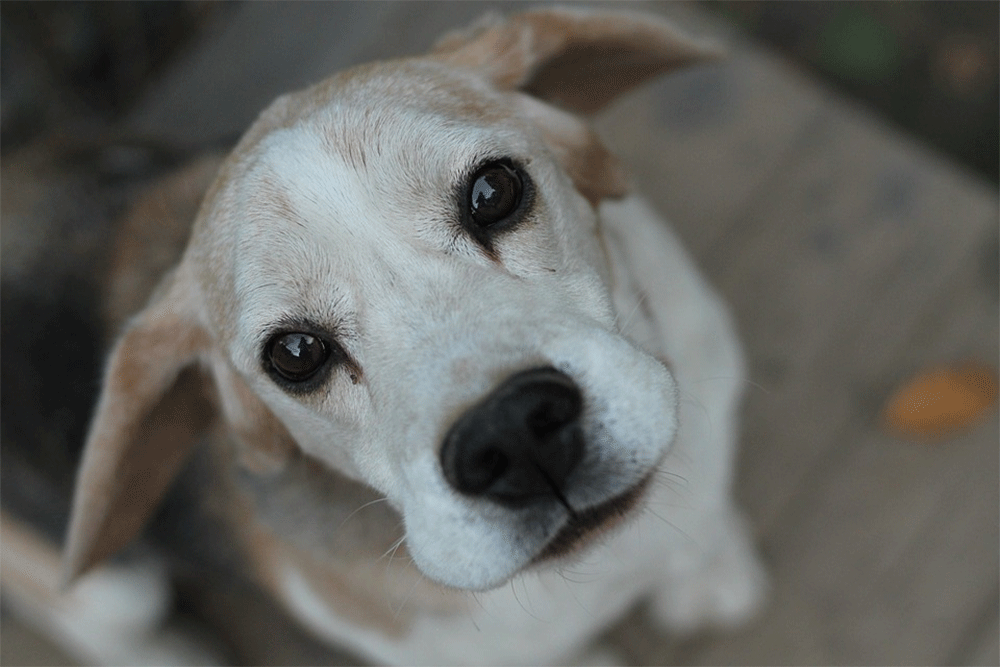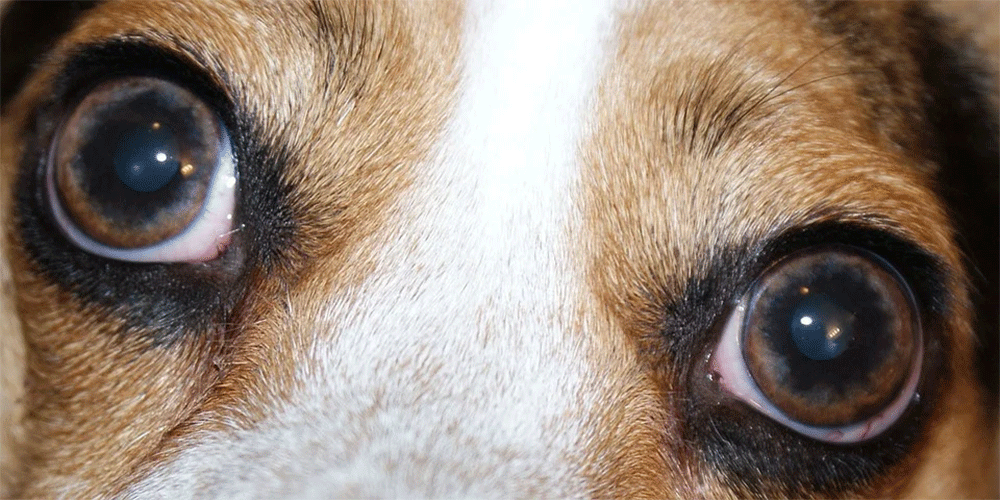Glaucoma is a serious condition that affects the eyes, and it is something that can happen to any dog. This condition is typically more common in older dogs, and it can be paired with other health conditions that come along with old age.
If your dog is suffering with glaucoma, then you might be wondering when would be the right time to have them put down to end their suffering. Sometimes, this can be the kindest option if your dog has a poor quality of life and experiencing constant pain.
Glaucoma is something that can be treated in dogs if it has been caught early, allowing them to live a long and happy life, but this might not always be the case. It can cause dogs to completely lose their eyesight, and it can also become very painful. This is the stage where some people with consider euthanasia.
If you are unsure if this is the right decision to make, or the right time to make it, we are here to help provide you with all of the information you might need to make the decision.

What is Glaucoma in Dogs?
Glaucoma is a disease where there will be an increased pressure in the eye that occurs due to inadequate drainage of fluid within the eye. This is a disease that is usually progressive, which means that it can get worse over time.
When the condition becomes severe, it can even damage the optic nerve in the eye and cause blindness and severe pain.
What Causes Glaucoma in Dogs?
Glaucoma can be caused by inadequate drainage of aqueous fluid, and it is not caused by an overproduction of fluid.
Primary glaucoma will lead to increased pressure on a healthy eye, and secondary glaucoma will lead to increased pressure due to a disease or injury to an eye.
Types of Glaucoma
There are two types of glaucoma that dogs can get, which are primary glaucoma and secondary glaucoma. With primary glaucoma, the fluid flow rate into or out of the eye becomes abnormal, which leads to an increase in eye pressure.
With secondary glaucoma, another condition is what causes the fluid drainage to be slowed or blocked, which then leads to increased pressure. This is much more common than primary glaucoma.
Can a Dog Live With Glaucoma?
There are lots of dogs that will be diagnosed with glaucoma that will go on to live happy and normal lives with the right treatment and medication.
The quicker that the condition is treated, the more likely you are to be able to minimize the effects of the disease and slow down its progression. If the condition is not caught early on, it can create a higher risk of permanent blindness.
What Are the Signs of Glaucoma?
Glaucoma is a condition that can be completely life changing for your dog, which is why it is important to be aware of the symptoms, so you can catch it early on. Some of the symptoms of glaucoma can include:
- A cloudy or blue appearance to the eye
- Redness on the white of the eye
- A dilated pupil that does not constrict when a light is shone into it
- Signs that your dog might be in pain
- Tilting of the head
- Rubbing at the eyes
- Bulging eyes
- A reluctance to open the eyes
- Sensitivity to extreme lights
- Sudden blindness
Most of the time, the disease will first affect only one eye before it eventually spreads to the other. It can be difficult to spot this condition at first, but the symptoms will become even more noticeable over time.
How is a Dog Diagnosed With Glaucoma?
To be diagnosed with glaucoma, you must take your dog to the vet as soon as you notice any of the above symptoms. Your vet will ask you about these symptoms to get a better idea of what is going on. They will also perform an ophthalmologic exam, and they can either treat your pet in the clinic or refer them to a specialist.
Intraocular pressure will be measured using a tonometer, and a drop of anesthetic spray might be used on the eye for this. The tonometer will blow a puff of air on the eye and measure the indentation. Alternatively, it will press a small plastic disk against the eyeball to measure the pressure.
When it comes to sudden glaucoma, the pupil will have a sluggish response to light, the blink response will be weak or absent, the cornea will be swollen or cloudy, the eye will be red and inflamed, and your dog may be squinting.
For chronic glaucoma, the pupil will have no response to light, and the blink response will be absent. The cornea will be cloudy and the eye is typically red and inflamed. The eye may also be enlarged and teary.
Your dog may also have to have an x-ray to rule out the presence of an eye abscess, injury, or tumor.
Is There Any Treatment for Glaucoma?
The treatment of this condition will depend on how severe it is. The hope is that treatment will work to restore normal eye pressure by either decreasing the production of fluid or increasing fluid drainage. It is likely that your dog will be provided with pain relief at this time.
With secondary glaucoma, the cause of the condition will need to be treated, which can involve repairing a trauma, surgical removal of tumors, or antibiotics for any infections. If it is just one eye that is affected, the necessary steps will be taken to prevent it from spreading to the other eye.
Some of the medications that are often used are topical drops or ointments that will work to lower the pressure in the eye or treat any inflammation or infection that is present. These will usually be administered 3 times a day for a certain period of time.
Beta-blockers can also be used to reduce the production of fluid, and carbonic anhydrase inhibitor diuretics reduce fluid production. The use of Car Cholinesterase inhibitors can also help to delay the spread of glaucoma to the eye that has been unaffected. Surgery may also be required at times, depending on the severity of the condition and the amount of damage to the eye.
When Should You Put Down a Dog With Glaucoma?

It is difficult to make the decision to have your dog put down, and whether or not you should do so will depend on the severity of the glaucoma and if it has been caused by an underlying disease.
If your dog does have other health conditions as well as glaucoma, it is more likely that their quality of life will be negatively impacted. Sometimes, having your dog be put to sleep is the kindest and most humane decision you can make, depending on the circumstances.
However, you should also be aware that not all cases of glaucoma are the same, and you should always talk to your vet if this is something that you are considering. Sometimes, putting your dog to sleep is the best option available to relieve their pain and suffering, but there might also be other options available. Talking to your vet will help you to understand your options and find out if there is anything else that you can do.
Things to Consider if You Are Thinking of Having Your Dog Put Down
If you are thinking about having your dog put down, there are some other things that you should consider first. We will leave some things for you to think about below before you make a decision.
- Is your dog experiencing frequent pain that cannot be managed or relieved through treatment? Is eye removal surgery an option for you? Note that you might not always notice that your dog is in pain, so you should keep an eye out for any signs that this is the case. It might not always be obvious at first, but you can often tell if you pay attention to their behavior and how they respond to things.
- Is your dog struggling with general living due to the fact that they are experiencing challenges with their vision? This can include injuring themselves due to bumping into things or failing down, even if you have tried to prevent this to the best of your ability.
- Is your dog experiencing depression due to the deterioration in their mobility or the pain that they are experiencing? Are they missing out on things that they should be able to do normally, like play with their toys or other dogs? A condition like this can negatively impact your dog’s mental health, which is something else that you should look out for. If there is no joy or happiness left in your dog’s life, then it could be time to have them put down.
This is not an easy decision to make, which is why it is important not to make it on your own. Turn to any available resources, like your vet, and make the most of the information that they have available. It may also be helpful to talk to someone that has experienced something similar.
Summary
Glaucoma doesn’t always have to lead to having your dog put down, and some dogs can still have a good and happy life regardless of their diagnosis.
However, other dog can face more serious consequences, which may lead you to consider euthanasia as the final option. It will all depend on the severity of their condition, and you should always talk to your vet if this is something that you are thinking about.
